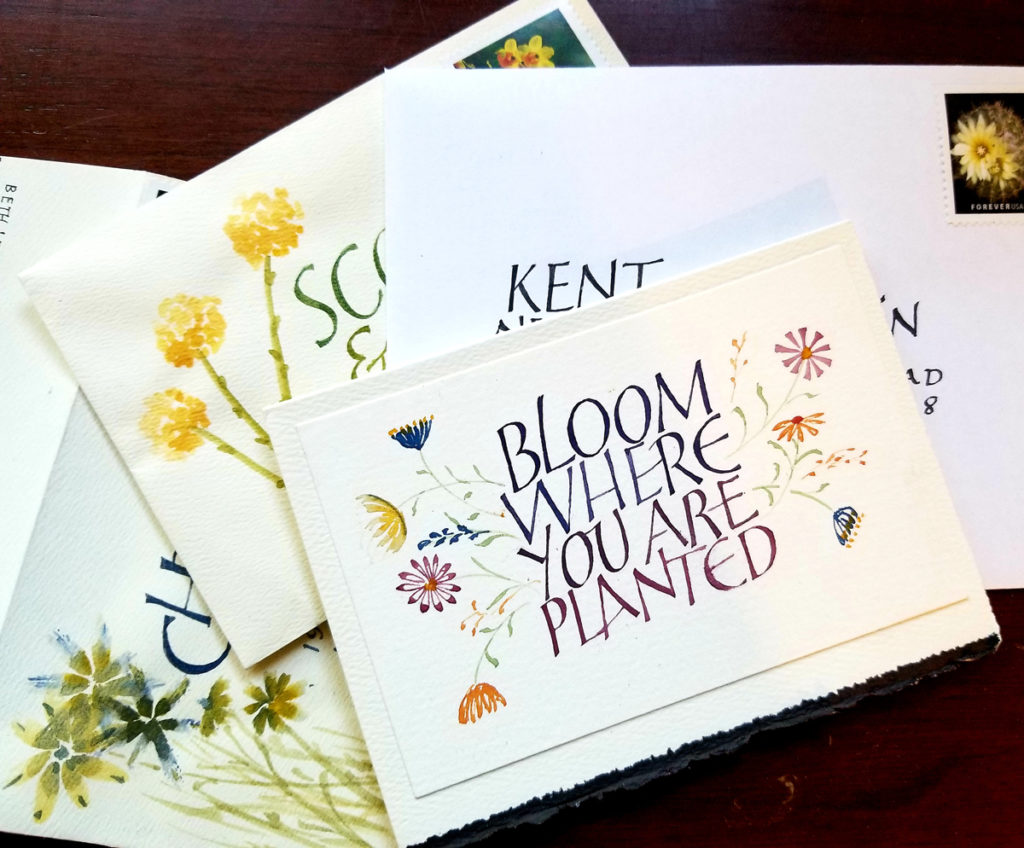
Slightly hungover from an overindulgence of Built Up Capitals, I’m trying flower painting… and a little hair of the dog that bit me, because I can’t quite go cold turkey even now.
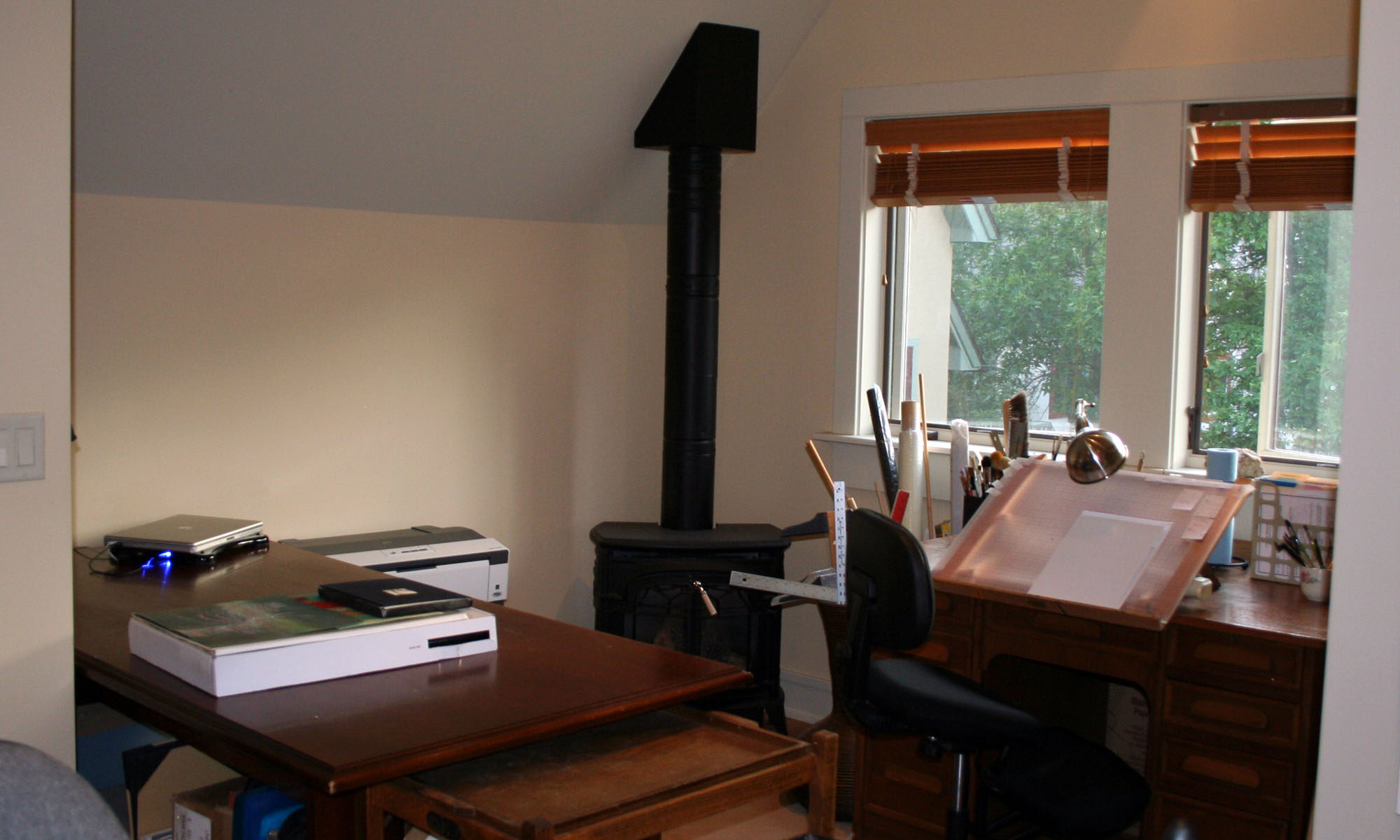
Calligraphy and book arts in the studio of Beth Lee, Bozeman, MT

Slightly hungover from an overindulgence of Built Up Capitals, I’m trying flower painting… and a little hair of the dog that bit me, because I can’t quite go cold turkey even now.
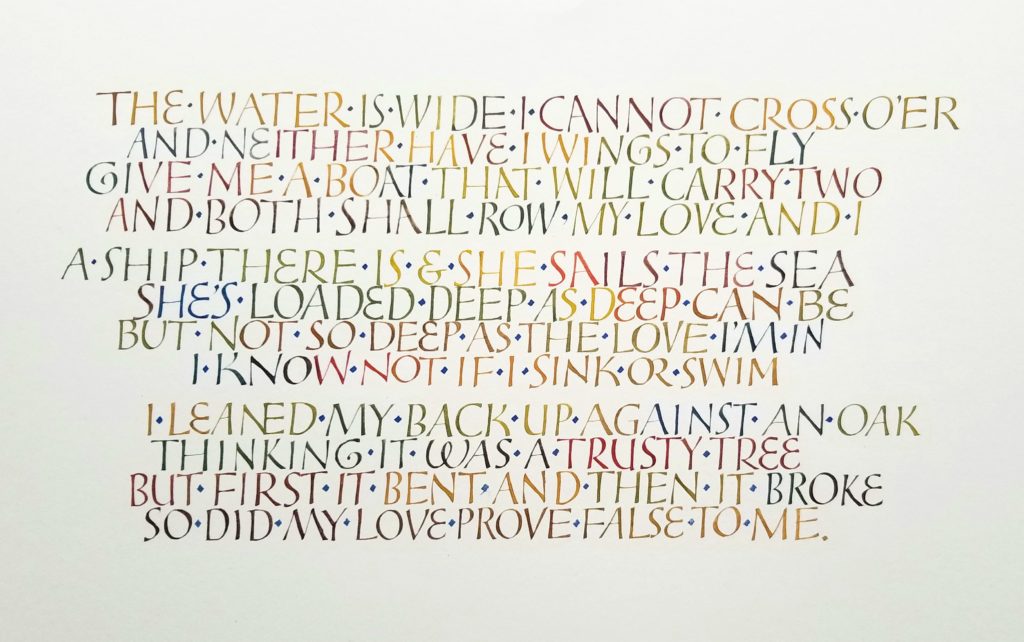
I am continuing to enjoy Yves Leterme’s online class, Built Up Caps. These David-Jones style letters are a pleasure.
One of the funnier bits of humor on the interwebs:

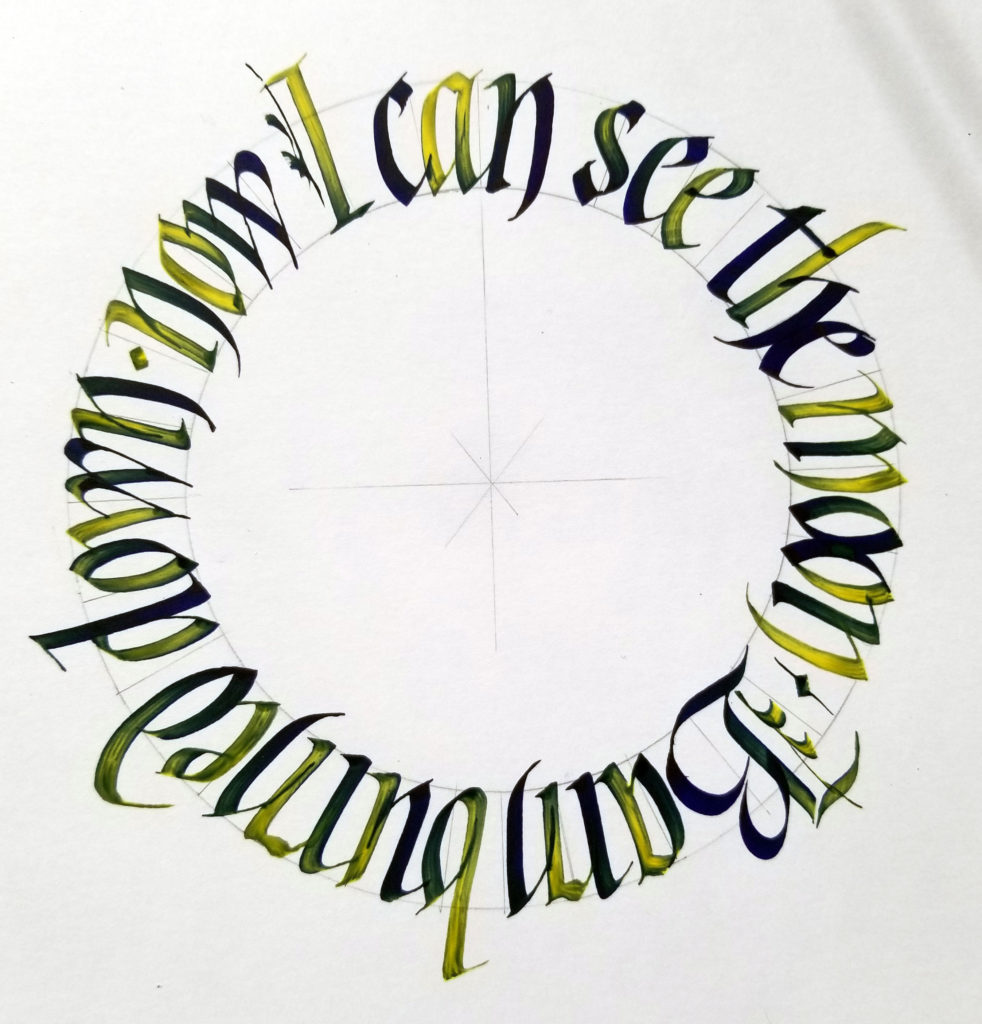
Thanks to Angie Vangalis for organizing an open-to-the public (!) virtual meeting of the Fort Worth Calligraphers Guild meeting online this afternoon. It was so good to be with people who care about x-heights, pen angles, and ink properties for a couple of hours.
Tamer Ghoneim presented the program, entitled “Circles on Steroids”, taking us through the process of writing in a circle — and, later, in a series of connected circles. Such fun! I followed along (image above), but instead of the straight-up blackletter that he demonstrated, I chose gothicized italic, a hand that is still texturally dense.
After the meeting I wanted to continue this process he introduced in the meeting: with a purple PPP ink cartridge in this Pilot Parallel Pen, he dipped the nib in the acrylic ink and then wrote, replenishing as the yellow faded and the purple approached full strength. He was using a Liquitex yellow acrylic ink, which somehow turned the purple in reddish, but my FW version didn’t do that, obviously. (I wasn’t at all surprised.) I repeated a quotation that had been suggested in the chat section of the meeting, lettering this time in a straight line somewhat in the style of the lettering by Karlgeorg Hoefer that I’ve been studying. The bolder weight necessitated some modifications.
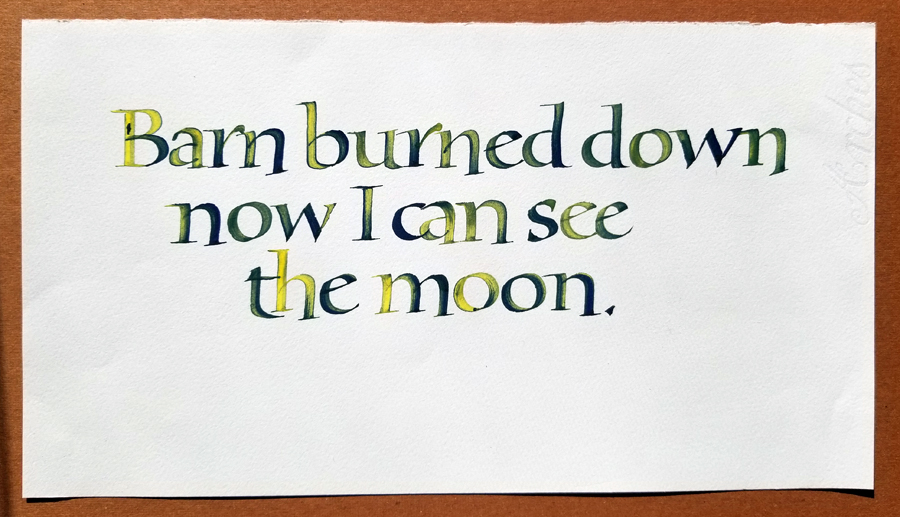
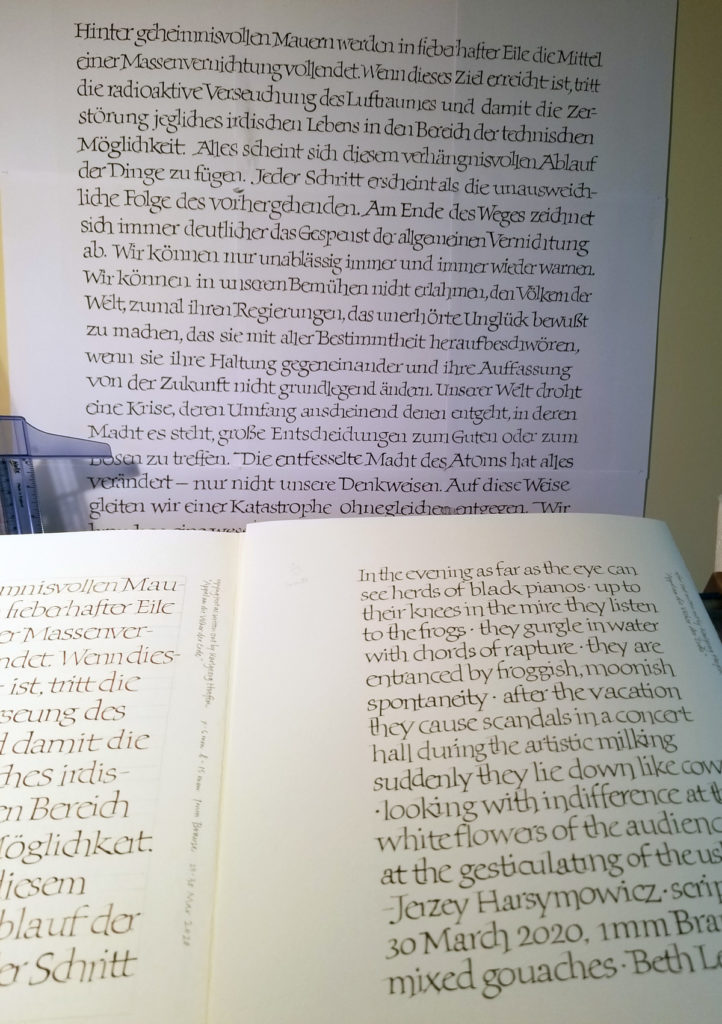
Ever since I saw it in International Calligraphy Today (1982, International Typeface Corporation), I have admired “Appel an die Völker der Erde”, a calligraphic poster by Karlgeorg Hoefer, . Here I’ve blown it up to the original 22 x 29.75 in and tacked it on the wall, the better to study. In my daily lettering journal, on the verso side, I copied the text as closely as I could, learning the Hoefer’s shapes and connections. He often slightly minimizes and tucks the ‘i’ in; I ‘ve inadvertently exaggerated it here, but I was so enjoying this tucking-in. The second stroke of the ‘r’ is often raised up the waistline to allow the next letter to tuck in. The bottom of the bowl of the ‘e’ is often pulled below the baseline to allow the next letter to tuck in. In a double ‘l’, the first one is usually normal while the second one dropped a little low to unlock it from the first. The ‘ch’ combination is always connected, but because the bowl of the ‘c’ is extended and foot of the ‘h’ raised to tuck into the bowl, it isn’t seen as a ‘d’. He seems to have done a push-pull on the finials of the ‘r’ and the ‘a’, similar to what happens in Carolingian ascenders, for instance.
These details form a compelling picture of idiosyncratic yet consistent choices that are both subtle and purposeful. Rhythm is important to the success of this piece.
Rhythm is also what my studies don’t have … yet. I’ll keep working. I’m thinking that a better paper (this is Strathmore Drawing 400 heavyweight), would be helpful. Hoefer wrote on “Japanese paper with Antiqua surface”. I haven’t been able to figure out just what that means. Nontheless, a kinetic understanding of Hoefer’s letters and connections will eventually yield that rhythm, and it’s what interests me most in this study.
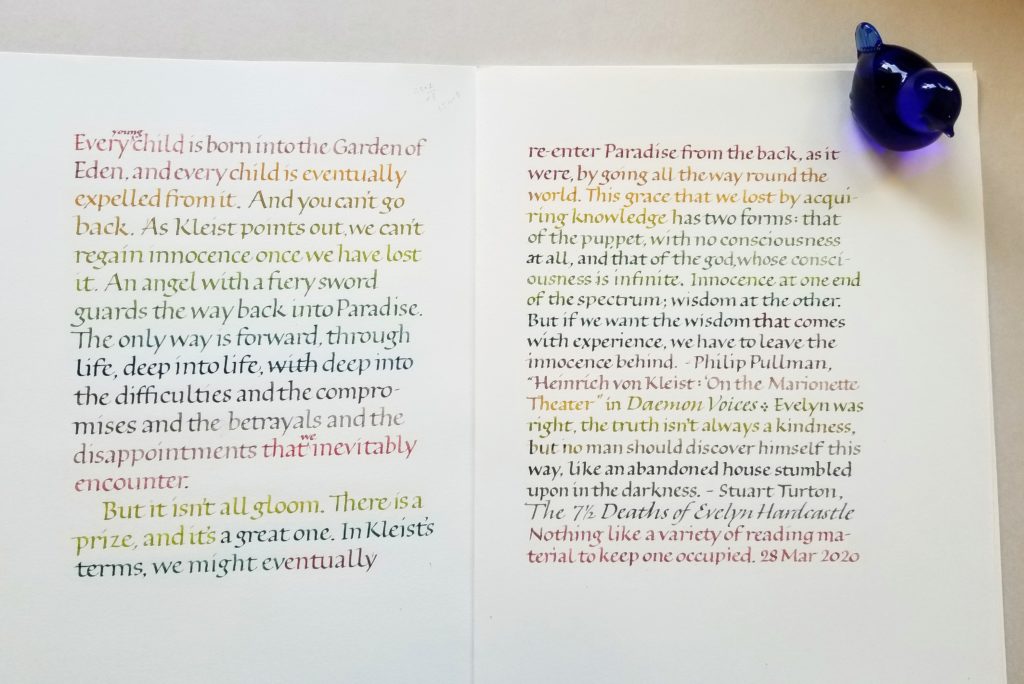
Lately I’ve been doing more bookbinding experiments and general studio cleaning and organizing. It’s good to get back to daily lettering.
My current reading stack is diverse. I’ve recently begun Daemon Voice, a series of essays by Philip Pullman. The sheer craftsmanship of his writing makes it a continual pleasure to read his work.
I just finished, finally, The 7½ Lives of Evelyn Hardcastle, by Stuart Turton. I’m not sure it was worth it, but every once in awhile I admired a good metaphor.

It was an organizing kind of day. I enjoyed ordering scraps of work into folios for binding into my next journal.
After a hiatus of some years, I’ve rejoined an 11-months-long monthly decorative envelope exchange. I’m enjoying it. We aren’t required to include anything calligraphic in the envelope — although we do have to include something. I’m putting calligraphy in mine.
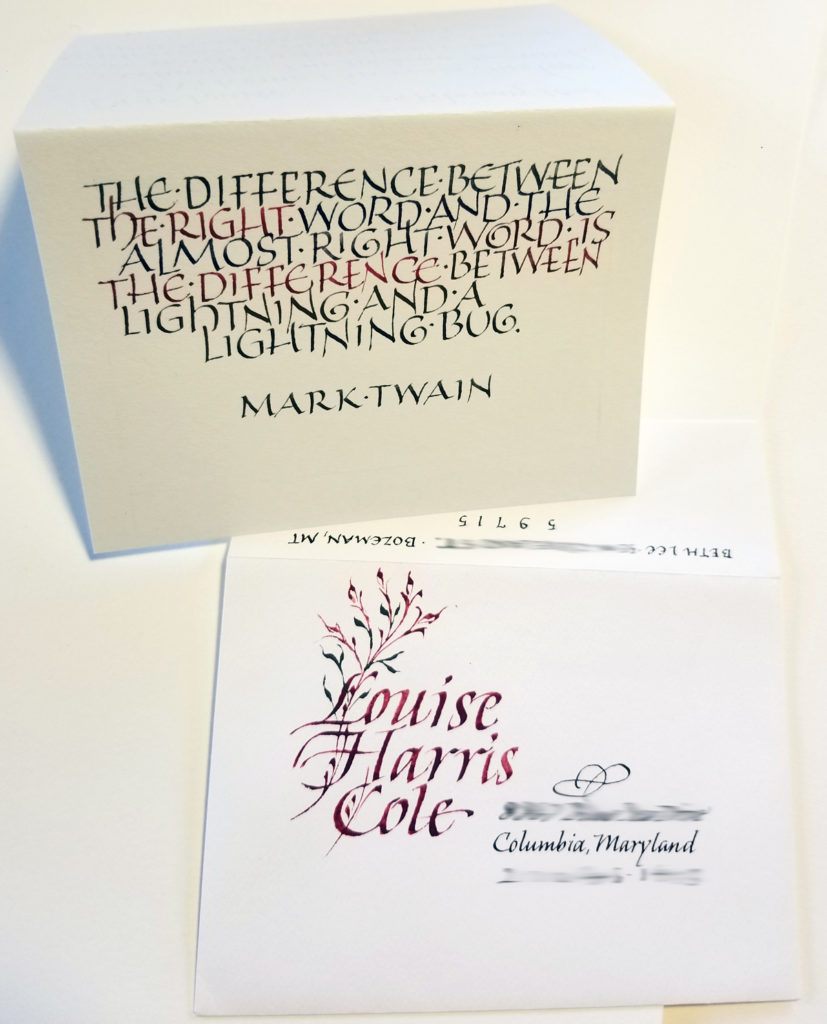


I’m thinking that the little meander book (2.5 x 3.5 in or so) in the corner may be how I got this leftover palette of gouache in the first place. The colors match. If so, then I began with three primaries (warm yellow and blue, cool red), and that’s it.
At this rate, I’ll be binding another journal of daily lettering soon.
